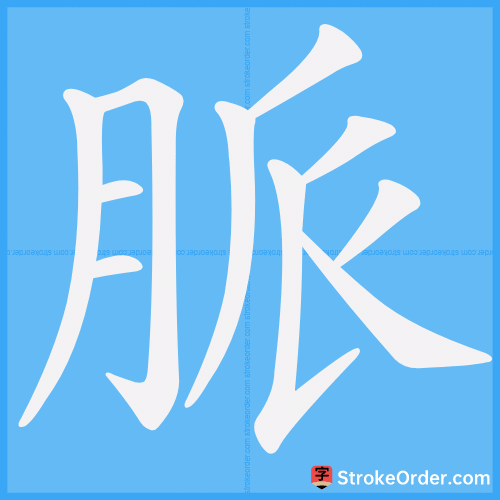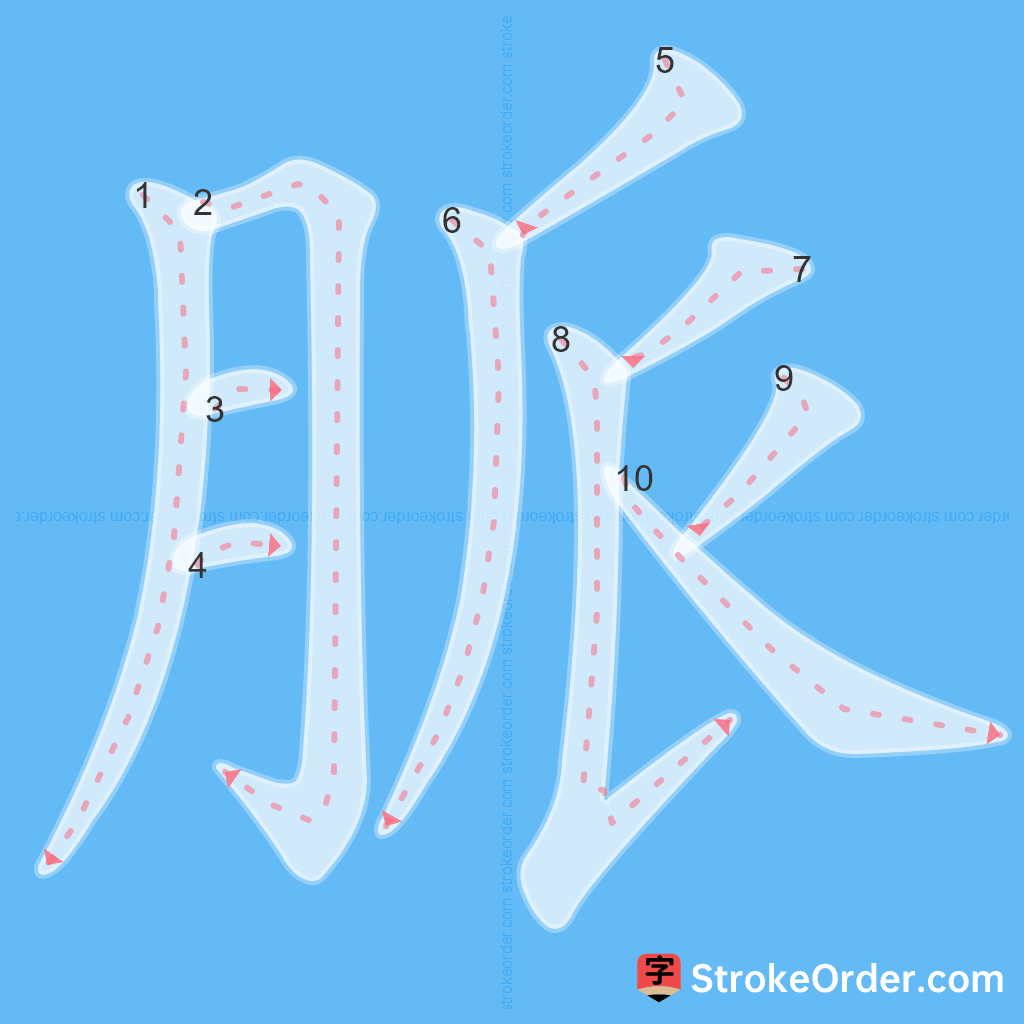脈 Stroke Order
Animated Stroke Order of 脈

Stroke Order Diagrams for 脈

Step-by-Step Handwriting Guide for 脈

Learn to Write Chinese Characters with Video Tutorials
Watch the video of writing the Chinese character "脈", learn the correct stroke order (笔顺) of the character "脈", and master the standard way of writing the character "脈".
Free Printable Handwriting Practice with Stroke Order: 脈
Printable Writing Practice Worksheet of "脈" in Portrait Orientation (Tian Zi Ge)

Printable Writing Practice Worksheet of "脈" in Landscape Orientation (Tian Zi Ge)

Information of 脈
Pinyin
mài、 mò
Radical
月
Strokes
10 strokes
Usage
★★★
Definition
mountain range / pulse
脈 (mài)
1. Blood vessels distributed throughout the bodies of humans and animals.
血管在人體和動物體內的分佈。
2. The pulsation of arteries.
動脈的跳動。
3. Things that are interconnected and systematic, like blood vessels.
像血管那樣連貫而自成系統的事物。
- 血管:~絡。~理。
(Vessels: vascular network, vascular system.)
- 脈搏:~搏。切~(in traditional Chinese medicine, refers to pulse diagnosis)。~口(the location on the wrist where pulses are felt)。~息。~象(pulsation characteristics and dynamics)。~門(the part of the radial artery visible at the wrist)。診~(to diagnose by feeling the pulse)。
(Pulse: pulse beat, pulse diagnosis in TCM, pulse location, pulse phenomena, and pulse monitoring.)
4. Underground water.
地下水。
- 脈發 (the springing up of underground water due to warming of the earth, providing moisture for farming).
(Sprouting water in spring.)
5. Lineage, sects, or hereditary systems.
血統或宗派的相承系統。
- 一脈相傳 (to be passed down through generations).
Definition in verb form (動):
1. To feel someone's pulse for diagnosis.
以脈診病。
- Example: In the novel "Dream of the Red Chamber," someone checks a pulse without any response.
(See Classic Literature for context.)
2. See also: mò (another character related to pulse).
脈脈 (mài mài)
1. To express affection or love through eye contact.
用眼神表達愛慕的情意。
- Example: ~~含情 (expressive gaze filled with love).
Also mentioned as an alternate pronunciation, also pronounced "眽." See the entry for "脉脉" for further details.